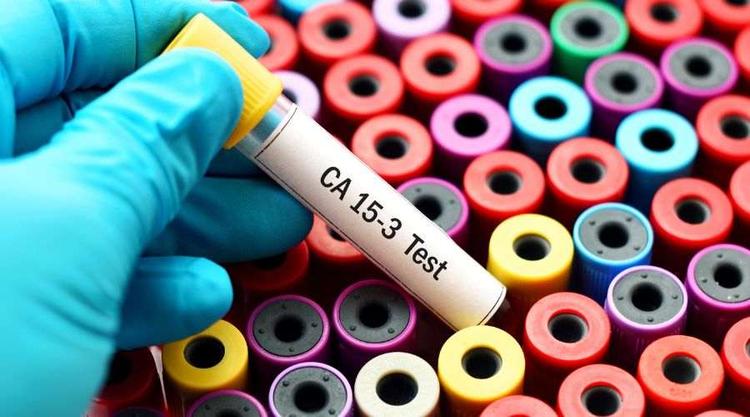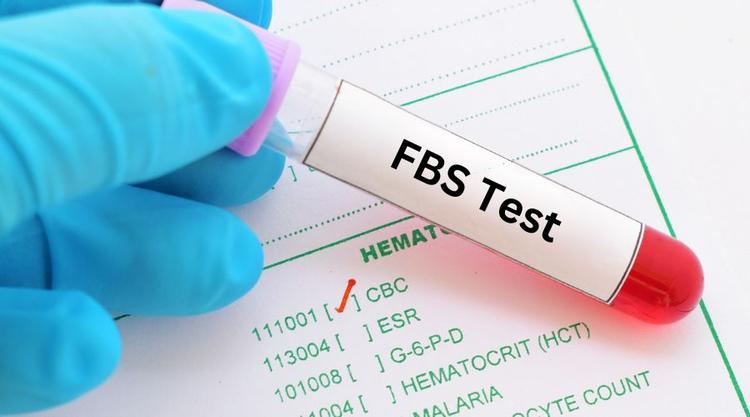CBP Test: Price, Purpose, Preparation, and Normal Range

Medically Reviewed By
Dr Sohini Sengupta
Written By Kirti Saxena
on Feb 3, 2024
Last Edit Made By Kirti Saxena
on Mar 18, 2024

The complete blood profile (CBP) measures the essential blood test that allows your doctor to evaluate each cell type in your blood. The CBP test measures the essential components of blood cells, including RBC, WBC, and platelets. Each of these types of cells performs essential functions to maintain overall health. The CBP test helps diagnose various health conditions and monitor how the body is affected by different diseases or medical treatments. You should consult your doctor if you notice symptoms like weakness, body aches, dizziness, weight loss, etc. Your healthcare provider may advise the CBP test as a routine health checkup to monitor general health or to identify health issues such as anemia, infections, or other blood-related disorders. Get CBP tests from nearby reliable labs to get accurate test reports.
Test details in brief
| Also Known As | Complete Blood Profile (CBP test) |
| Purpose | This test measures blood components to diagnose various disorders. |
| Preparation | Do not take any over-the-counter medicine without confirming with your doctor. |
| Fasting | No Fasting Required |
| Get Reports Within | Within 12 hours |
| CBP Test Cost | INR 299 |
Purpose of the CBP test
The CBP test helps maintain good health and preventive measures and improves long-term health. The purpose of the test is to assess your general health. Here is the purpose of the test-
- Diagnosis- The test detects the early signs of potential health problems. The test measures the blood components to identify causes of anemia, inflammation, blood cancers, and bleeding disorders.
- Monitoring- The test monitors the health conditions and effectiveness of treatment by tracking changes in blood cell parameters.
- Assess risk factors- The CMP test identifies the underlying risk factors for certain diseases, such as cardiovascular disease or blood clots.
What blood components does the CBP test measure?
The CBP test measures the various components of blood cells. A standard test includes the various parameters related to RBC, WBC, and PLT that are described below-
Red Blood cell measurements
- Red Blood Cells are the total number of RBCs in your blood sample.
- Hemoglobin measures the amount of oxygen-carrying protein found in RBCs.
- Hematocrit measures the amount of blood volume that consists of WBC.
White Blood cell measurements
White blood cells, also called leukocytes, are an important part of the immune system. The test measures the total WBC count in the blood. However, the breakdown of the amount of each of the five different types of WBC is as follows-
Total WBC count - This measures the number of WBCs per microliter (µL) of blood. The normal range of total WBC count is 4,500 to 11,000 µL/mL.
WBC Differential
This provides a breakdown of the individual types of WBCs as percentages of the total WBC count.
The five main WBC types are:
- Neutrophils- Fight bacterial infections.
- Monocytes- Remove debris and fight chronic infections
- Eosinophils- Combat allergic reactions and parasites
- Basophils- Involved in allergic reactions and inflammation
Platelets Measurements
Platelets, also called thrombocytes, are cell fragments that circulate in the blood and play an important role in blood clotting. When an injury and bleeding begins, the platelets help to stop bleeding, clumping together to form a temporary plug. The test measures the number of platelets per volume of blood.
When should I get a complete blood count test?
Your doctor may recommend the test based on your medical history, symptoms, and risk factors. Here are some general circumstances that indicate you need a CBP test-
- As a part of regular health checkups, doctors may advise you to take the test to detect early signs of potential health problems.
- If you notice symptoms like fatigue, weakness, and fever, your doctors may recommend the test.
- Doctors may recommend certain surgeries or procedures like chemotherapy to assess your blood cell status and potential risks.
- The test is ordered to diagnose conditions like anemia, infection, or blood disorders.
- Your doctor may recommend the test if you have a family history of blood disorders or a high risk of chronic diseases.
- If you're pregnant or breastfeeding, your doctor may recommend regular CBPs to monitor your health and the baby's.
Preparation for the CBP test
Like other blood tests, the CBP blood test is simple and does not require any special preparation before the test. The preparation is necessary to ensure the accuracy of the test. So, follow the below guidelines-
- No fasting is required before the test, and you can eat and drink as usual as per your routine.
- Stay hydrated to ensure an easy blood draw and accurate results.
- Don't stress, as this might impact your reports.
- Inform your doctor about any medications or supplements you are taking.
- Avoid strenuous exercising as it might impact results temporarily.
- Get enough sleep to promote cell regeneration and ensure accurate results.
The procedure of the CBP test
The blood drawn is a simple procedure. The phlebotomist will first tie a band or tourniquet to your arm to make the veins more visible and clean it with an alcohol-based or antiseptic solution. After that, he will insert a needle in the vein to collect the blood. After the test tube or vial is filled, the needle will be removed, and the test will be over. The phlebotomist will put a bandage over the puncture site to stop bleeding. The blood drawing procedure will only take 3-5 minutes.
What do the CBP test reports indicate?
The CBP test reports will be provided within 12 hours of sample collection. Always consult your reports with your healthcare provider, as your doctor will review the levels and how they compare to the lab and give you personalized treatments. The reports will show a reference range defined by the laboratory for each component. The results are above or below the normal ranges, showing health complications.
The following sections describe some potential causes of high or low levels of RBCs, WBCs, and platelets.
Red Blood Cells
- Red Blood Count- A low count of RBC indicates iron deficiency, vitamin deficiency, bone marrow problems, or chronic diseases. At the same time, high counts might suggest dehydration or certain cancers.
- Hemoglobin (Hb)- Low hemoglobin levels indicate anemia causes fatigue and weakness. At the same time, high levels might be due to dehydration or heart disease.
- Hematocrit (Hct)- Low levels of Hct means anemia, while a high Hct means dehydration or blood clotting disorders.
- Mean Corpuscular Volume (MCV)- Indicates the average size of RBCs. Smaller than normal (microcytic) may be due to iron deficiency or bone marrow problems. Larger than normal (macrocytic) could be caused by vitamin B12 or folate deficiencies.
White blood Cells
Total WBC count- A high count (leukocytosis) can indicate infection, inflammation, or cancer, while a low count (leukopenia) increases the risk of infections.
WBC Differential-
- Neutrophils- Increased levels suggest bacterial infection.
- Lymphocytes- Increased levels might indicate viral infection or immune system issues.
- Monocytes- Increased levels mean chronic infections or autoimmune diseases.
- Eosinophils- High levels indicate allergies, parasitic infections, or certain skin conditions.
- Basophils- High levels are rare but can indicate allergic reactions or certain cancers.
Platelets
- Platelet Count- A low count (thrombocytopenia) increases the risk of bleeding. A high count (thrombocytosis) raises the risk of blood clots.
- Mean Platelet Volume (MPV)- Larger platelets (macrocytosis) might indicate immune disorders or vitamin deficiencies. Smaller platelets (microcytosis) could indicate bone marrow problems or certain medications.
What is the Normal Range for CBP tests?
The normal ranges may vary depending upon factors like age, gender, and type of techniques used in different laboratories. However, here's a general overview of the normal ranges of CBP tests:
| RBC Parameters | ||
| Normal Range | Units | |
| Haemoglobin | 12.0 - 15.0 | g/dL |
| RBC Count | 3.8 - 4.8 | 10^6/µ |
| PCV | 36 - 46 | % |
| MCV | 83 - 101 | fl |
| MCH | 27 - 32 | pg |
| MCHC | 31.5 - 34.5 | g/dL |
| RDW (CV) | 11.6 - 43.9 | % |
| RDW-SD | 35.1 - 43.9 | fl |
| WBC Parameters | ||
| TLC | 4 - 10 | 10^3/µl |
| Differential Leucocyte count | ||
| Neutrophils | 40 - 80 | % |
| Lymphocytes | 20 - 40 | % |
| Monocytes | 2 - 10 | % |
| Eosinophils | 1 - 4 | % |
| Basophils | <2 | % |
| Absolute Leukocyte Counts | ||
| Neutrophils | 2 - 7 | 10^3/µl |
| Lymphocytes | 1 - 3 | 10^3/µl |
| Monocytes | 0.2 - 1.0 | 10^3/µl |
| Eosinophils | 0.02 - 0.5 | 10^3/µl |
| Basophils | 0.02 - 0.5 | 10^3/µl |
| Platelet Parameters | ||
| Platelet Count | 150 - 410 | 10^3/µl |
What are the common symptoms related to abnormal CBP Tests?
The CBP test is a common blood test that provides information about various blood components. Any abnormalities in CBP results may indicate certain health conditions. Here are some common symptoms-
- Weakness
- Pale skin
- Shortness of breath
- Body Pain
- Blood clotting
- Weight loss
- Joint pain
- Swelling
- Hair loss
- Changes in mood
- Dry skin
- Dizziness
Red Blood Cells (RBCs)
Anemia
- Fatigue
- Weakness
- Pale skin
- Dizziness
- Shortness of breath
- Cold hands and feet
Iron deficiency anemia
- Brittle nails
- Hair loss
- Mouth sores
- Tongue inflammation
White Blood Cells (WBCs)
Leukocytosis (high WBC count)
- Fever
- Chills
- Night sweats
- Fatigue
- Muscle aches
- Swollen lymph nodes
Leukopenia (low WBC count)
- Frequent infections
- Fever
- Fatigue
- Mouth sores
- Skin infections
Platelets
Thrombocytopenia (low platelet count)
- Easy bruising
- Frequent nosebleeds
- Excessive bleeding from cuts or wounds
- Heavy menstrual bleeding
Thrombocytosis (high platelet count)
- Headaches
- Dizziness
- Numbness or tingling in hands or feet
- Vision problems
- Chest pain
- Blood clots

CBP Test: Navigating Your Path to Health
The CBP test is valuable for detecting early signs of infections, anemia, and even cancers.
If you are not feeling well and noticing symptoms like fatigue, weakness, blood clotting, and body aches, you must consult your doctor and take a CBP test for a routine health checkup. Tracking your CBP regularly helps manage existing health problems and optimize treatment. Regular CBC tests are integral to preventive healthcare, enabling early detection of potential health issues. By identifying abnormalities in blood cell counts, healthcare providers can initiate timely interventions and treatments, improving outcomes and preventing the progression of diseases. Early detection of abnormalities allows for proactive health management, promoting overall well-being.
CBC Test Price in Different Cities:
| City Name | Discounted Price |
| Delhi | ₹299 |
| Mumbai | ₹299 |
| Bangalore | ₹299 |
| Noida | ₹299 |
| Pune | ₹299 |
| Lucknow | ₹299 |
| Ahmedabad | ₹299 |
| Hyderabad | ₹299 |
| Chennai | ₹299 |
| Gurgaon | ₹299 |
| Jaipur | ₹299 |
| Faridabad | ₹299 |
| Indore | ₹299 |
| Patna | ₹299 |
Note: Our services are also available in several other cities in India. Please select your preferred city from above.
FAQs
1. What is the CBP test?
The CBP test assesses the number of blood cells, including RBCs, WBCs, and platelets. CBC tests help to find the cause of anemia, infection, and blood disorders.
2. Why is the CBP test done?
The CBP test helps measure the number of blood cells. The test identifies various medical conditions, including anemia, infections, and blood disorders.
3. What is the CBP test during pregnancy?
During pregnancy, the CBC test is routinely recommended by doctors to monitor maternal health and detect other health complications. It assesses RBCs, WBCs, hemoglobin, and platelets. Low blood count levels may indicate a deficiency of iron and may cause anemia in the mother and baby.
4. What is the cost of the CBP test?
The CBP test price at Redcliffe Labs is INR 299. Book your test with us today to know your blood count levels.
5. Do CBP blood tests recognize any blood infection?
Yes, the CBP test may indicate the presence of an infection by assessing white blood cell counts; it doesn't identify specific pathogens.
6. How do you read CBP test results?
The CBP test reports show the normal range values defined by the laboratory. If the values are between the ranges, it means the reports are normal. However, if the values are above or below normal ranges, it indicates potential health issues.
7. Is the sugar test covered in CBP?
No, the sugar test is not covered in the CBP test. CBP test only covers the blood cell counts. If you want to test your sugar levels, take the Hb1AC test from nearby labs or book a home collection from Redcliffe Labs.
8. Should I fast for the CBP test?
No, you do not need to fast before the CBP test. You can eat and drink normally before the test.
9. What are the tests in the blood CBP test?
A total of 26 parameters were covered in the CBP tests, including Absolute basophil count, Blood, Absolute Eosinophil Count, Absolute Lymphocyte Count, Absolute Monocyte Count, Absolute Neutrophil Count, Basophils, Eosinophils, Hemoglobin Hb, Lymphocytes, MCH, MCHC, MCV, MENTZER, INDEX9MCV/RCC, Monocytes, MPV Mean Platelet Volume, Neutrophils, PCT, PCV Haematocrit PDW, Platelet Count, Thrombocyte count, P - LCC, P - LCR, RBC Count, RDW-CV, RDW (Red Cell Distribution Width), and WBC-Total Counts Leukocytes.
Leave a comment
1 Comments
Shaik arshiya
Apr 15, 2024 at 1:35 PM.
Exlent
Myhealth Team
Apr 15, 2024 at 4:46 PM.
Glad you have liked the information.



